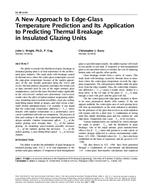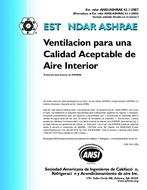Description
The ability to predict the likelihood of glass breakage in insulated glazing units is of vital importance to the architectural glass industry. This study deals with breakage caused by thermal stress where the center-glass temperature exceeds the edge-glass temperature because of the sudden appearance of the sun. Results generated using the VISION and FRAME thermal analysis programs reproduce the trends seen in data currently used by one of the major primary glass manufacturers, and on this basis threshold values applicable to the VISION/FRAME method were determined. VISION/FRAME results show the effect of indoor/outdoor temperature difference, insulating spacer/sealant assemblies, clear-sky cooling, tight-fitting indoor blinds or drapes, and vinyl versus a thermally broken aluminum frame. For example, it was found that the center/edge temperature difference (DTc-e ) varies linearly with outdoor temperature so a performance curve can be established with only two simulations. The presence of tints and coatings is the single most important glazing system design variable. Outdoor temperature affects DTc-e of the indoor glazing more strongly than DTc-e of the outdoor glazing. An insulating spacer/sealant assembly increases DTc-e of the outdoor glazing but decreases DTc-e of the indoor glazing. A close-fitting blind caused DTc-e to increase sharply.
Units: Dual
Citation: Symposium, ASHRAE Transactions, vol. 105, pt. 2, Seattle 1999
Product Details
- Published:
- 1999
- Number of Pages:
- 9
- File Size:
- 1 file , 210 KB
- Product Code(s):
- D-7451




